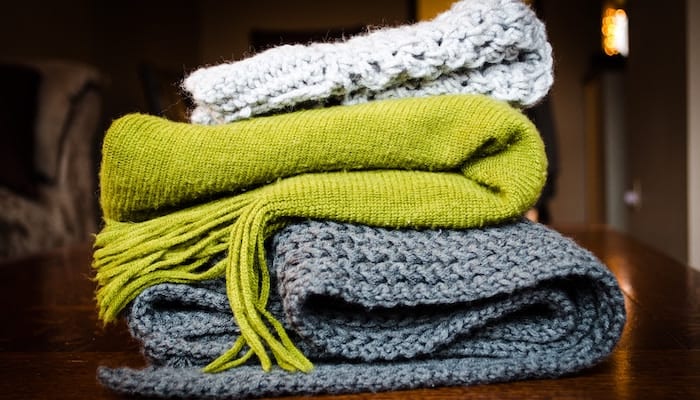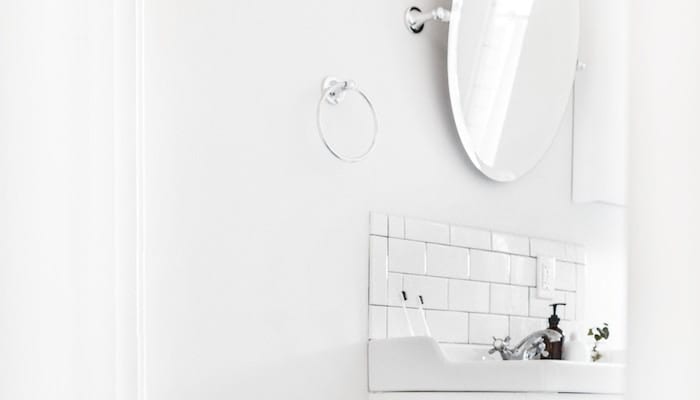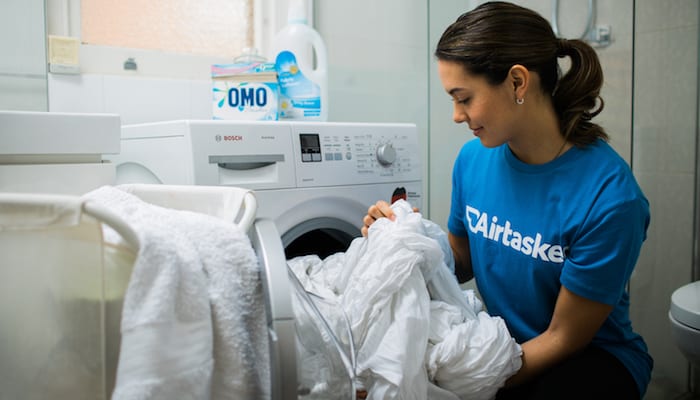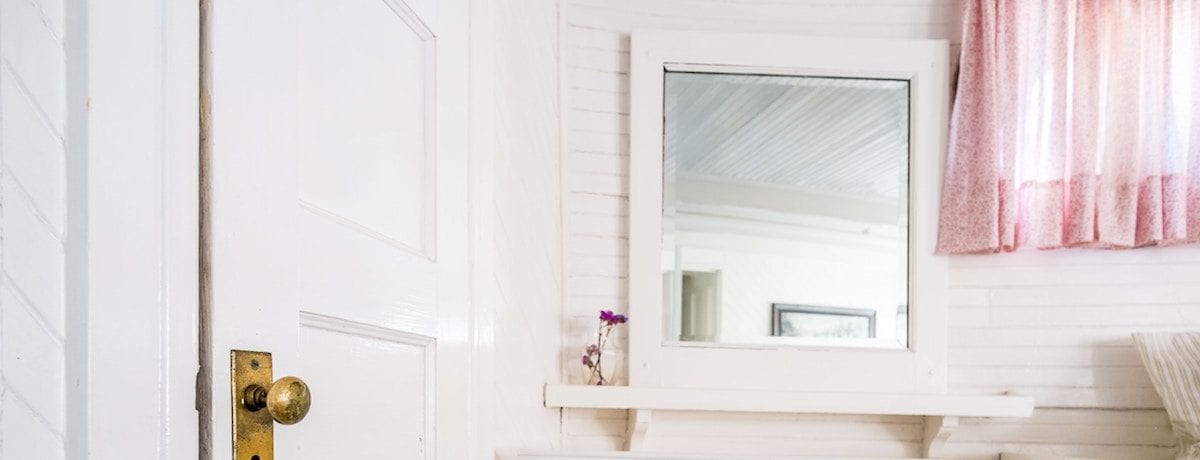If you live in Sydney, you’ll know it’s been a very wet autumn and a cold start to winter. Along with the awful weather, mould and mildew may have also snuck into the home and taken up residence in your bathroom or wardrobe.

No matter how much house cleaning you do, it can ruin furniture, your clothes and there is a real health risk. Mould can cause issues such as sinus, asthma, yeast infections, headaches, fatigue, depression, skin and respiratory infections and aching joints. It’s toxic and needs to be taken care of immediately.
Your first instinct will be to go to your local supermarket and stock up on mould killing products, but I hate to be the bearer of bad news – they won’t work. And I’m going to tell you why.
Mould vs. Mildew – what is it?
Mould is a type of fungi (yep, gross) and mildew is a type of mould. Mildew is what can show on surfaces like wood, wool, leather, silk, cotton and linen) and it’s pretty much everywhere and only needs water to get a colony started.
Mould and mildew love warm, moist, sometimes dark spaces – that’s why it’s important to air areas like garages and cellars regularly (especially after rain).
How to get rid of mould?
Feel like throwing everything out? Unfortunately, it’s the mildews food source, which means you’ll have to get rid of the water source. To do this requires you to dry out your home and eliminate any moisture and dampness.
Are you renting?
You should tell your landlord (in writing) as they have a duty to maintain the rental in reasonable repair, which includes mould. For more information head to tenants.org to find out what your rights and responsibilities are.

Here’s a quick list of things you can do to prevent moulds from occuring:
- Make sure you have ventilation leaving doors and windows open on dry days.
- Insulate your ceilings to keep them warmer so it’s less prone to condensation – moulds water source.
- Open up the curtains and windows to let the sun in (remember it likes dark spaces).
- After a rainstorm check for leaks and water pooling on the roof.
- Dry all wet areas.
- Clean indoor plants of dust and extra water.
- Wipe away condensation.
- Use a dehumidifier – set it to less than 55% humidity.
What about bleach?
Bleach will only mask it and not get rid of the mould at all and if you are suffering any allergies from the mould, those symptoms will stick around too.
To clean mould, you’ll need…
- Face mask
- Goggles (especially for ceiling and walls)
- Gloves
- Newspaper
- Micro-fibre cloth
- Bucket
- Broom
- Toothbrush
- Old stockings
- Oil of Cloves
- Vinegar
Fixing Mouldy Things
Washable fabrics (curtains, cushions, bedding, towels, clothing)
- Soak in 1 cup salt and vinegar in 10L of water with 3 drops Oil of Cloves – Leave overnight.
- Next morning, squeeze out as much as possible and hang in the sun until dry and leave out for an additional hour as a salt crust forms.
- Use a soft brush to remove salt crust over the newspaper and dispose of it after.
- Machine wash with warm water and hang to dry as normal.
- Spray with 3 drops Oil of Cloves and 1L of water and leave to dry.

Non-washable fabrics (suede, leather, silk)
- Lay down sheets of newspaper and put the items on top.
- Mix some coarse salt with a little vinegar and a drop of Oil of Cloves.
- Leave to sit for a day in the sunshine.
- Brush off mould as mentioned in washable fabrics and spray again with Oil of Cloves water mixture.
Leather goods
- Put 3 drops of Oil of Cloves with 1/2 cup baby or coconut oil.
- Wipe mouldy area in a circular motion.
- Leave to soak and store in a light airy location.
Non-portable/washable fabrics (carpets)
- Spray with a mixture of Oil of Cloves (3 drops), 1/2 cup vinegar, 5 cups of water and then sprinkle salt over the top in a thick layer.
- Leave overnight to dry and then vacuum.
- Repeat if necessary.
Mouldy grout
![]()
- Use a toothbrush or grout brush and dip into vinegar and then in a mixture of 3 drops Oil of Cloves and 1/2 cup bicarb soda.
- Brush while fizzing on grout.
- Repeat and afterwards spray with clove oil and water mixture and leave to dry out.
Cupboards
- Hang a stick of chalk tied together with ribbon to absorb moisture.
- When chalk become damp, hang outside to dry.
- Reuse chalk bundle.
Walls and ceilings
- Mix 3 drops Oil of Cloves, 1/2 vinegar and 5 cups water.
- Use a clean broom, and the leg portion of stocking over the head and dip into solution.
- Sweep over the mouldy area.
- Allow it to dry and repeat.
- Every month spray walls/ceiling with a solution of 3 drops Oil of Cloves to 1L of water and leave to dry completely.
All of this cleaning can take a lot of energy and time, so if you need a helping hand there are plenty of Airtaskers in your local neighbourhood who can help.




